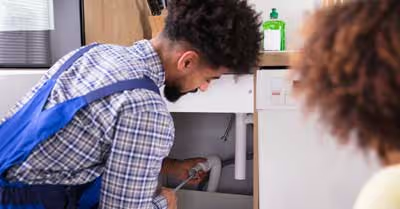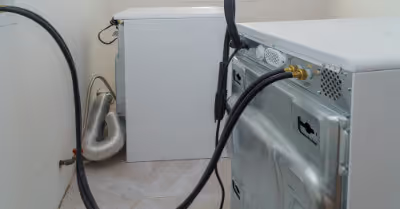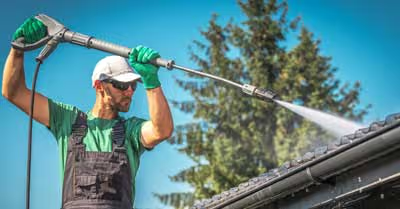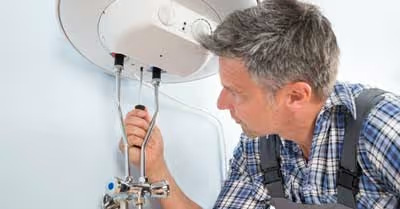Table of Contents
Required Tools
You probably have most of the tools that you need to wire a 3-way switch. You will need:
- Needle-nose Pliers
- No Contact Voltage Tester
- Utility Knife
- 4-in-one Screwdriver
- Wire Stripper
- Wire Cutter
- Electrical Tape
- 2 3-way Switches
- Cable (14-3 or 12-3)
Throughout the wiring, you can use the voltage tester to see where any issues arise. It is also smart to use it to test wires before touching them.
Types of Wires
- Neutral -This is a white wire and is located within the power-in cable.
- Ground - The grounded wire in a box or switch is either green or bare copper.
- Hot - the black in the power-in cable is always hot unless you cut off the power at the source
- Power-in - Provides the power from a fuse box or breaker panel.
- Cable - a combination of two or more wires. They will be bundled together and typically contained within insulating material.
- Two-rope - A cable that has 2 wires in addition to the ground wire.They will usually be white and black while the ground wire is green or copper.
- Three-rope - A cable with 3 wires in addition to the ground wire. Typically will have a white, a black, and a red wire plus the green or copper colored ground wire.
Screw Terminals
- Ground Screw - Green, ground wire always connects to this screw
- Common Terminal - This screw is a different color than the others and is usually darker.
- Traveler Terminals - The other two screws are traveler terminals where the traveler wires are connected. These two screws are interchangeable.
When you attach wires to the screw terminals use needle nose pliers to wrap the wire around the screw in a clockwise direction. Then, tighten the screw. Generally, the ground terminal will face down.
Things to Know
There are some things you need to know regardless of the type of configuration you will do:
- Black power-in wire will always go to a switch’s common terminal. The other switch’s common terminal will go directly to the light fixture.
- There will be two traveler wires and they always connect the two switches. Sometimes, they will splice to additional cables.
- Neutral wiring always connects the light fixture to the power-in cable. It will never terminate at a switch.
- Both switches and the light fixture will have a ground wire ending at it. Sometimes, however, old homes will not have a ground wire in the switch or light boxes.
- Pay attention to the colors of the terminals since the configuration isn’t standard. Two, the traveler terminals, will be the same color. The other two will be different colors, but the ground screw should be green or copper colored and the common terminal is typically darker
- Wrap electrical tape, preferably black, around any white travelers as a code that they are in a cable that is not neutral. This is because it is a requirement that all neutral wires be white except for white wires in a cable that isn’t being used for neutral.
- White is the only required color so even though the colors here are the most likely, some electricians may use different colors.
Power to Light Fixture First
This is how to wire a 3-way switch when the power-in cable goes directly into the light fixture box. It is common when multiple light fixtures share a single breaker and the switches share a wall. The cables need to go to the light box, between the switches, and from one of the switches to the light box.
The current will enter the light box and then go into a cable. This cable will connect to the switch box and then it will be spliced to the white neutral wire. Then the current will go to the second switch's common terminal.
Then the current will continue on the red wire to the traveler terminal on the other switch. If this switch is on the electricity will continue along the black wire to the light box and fixture. The current returns to the power-in cable via the neutral wire.
Power to Light Box First
In this situation, the power-line wire enters the light box and three rope cables go between the light box and switch box. This is a good method to use if switch boxes are on separate walls, but the ceiling has electricity available.
The black wire will take the current into the light box. Then, it will flow on a white wire to the common terminal of one of your switches. It will exit this switch from one traveler terminal.
It returns to the light box to splice to another wire that goes to the other switche’s traveler terminal. When it exits this switch through the common terminal, it will go to the light fixture. The neutral wire will go from the power-in cable to the light itself.
Power to Light Switch First
With this method, the electricity runs to one switch then through the other before making its way to the light fixture. This method works when there are two or more switches that use the same box.
With this configuration the neutral wire from the power-in is taken to the light with 3-rope.
First, the current will enter the switch box via the black wire. It will connect to the common terminal. When the switch is off, it will exit via the red wire and go to the second switch. Here it will connect to the traveler terminal.
With the second switch off, it will exit that switch on the common wire before heading to the light fixture. After it goes through the fixture, it returns to the switch it just came from on the neutral wire.
Next, another white wire in a 3-rope will go between the two switch boxes. Last, it will be spliced to the neutral wire in the power-in cable before going to the fuse box.
Power to Switch Box First
Here, the power-in cable will go to one of the switch boxes first. The current will go into the first switch box’s common terminal via a black wire. If the switch is on, the current will continue on the red traveler wire to the second switch’s traveler terminal.
When this second switch is on the current goes through the neutral wire back to the first switch box. Then, it is spliced to the black wire going to the light. After it powers the light fixture, it goes down the neutral wire back to the initial switch box and then to the fuse box to complete the circuit.
Recent Articles
















